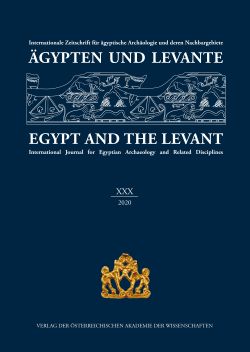
Ägypten und Levante 30, pp. 547-568, 2020/12/29
Internationale Zeitschrift für ägyptische Archäologie und deren Nachbargebiete
International Journal for Egyptian Archaeology and Related Disciplines
Jubiläumsausgabe – 30 Jahre Ägypten und Levante
Anniversary Edition – 30 Years of Egypt and the Levant
The origins of the Philistines have traditionally been understood within the context of a migration of “Sea Peoples” at the beginning of the Iron Age. However, excavations in other areas of the eastern Mediterranean have not yielded compelling evidence of a large-scale migration. We contend that migration is still the best explanation of the evidence, but the effect on the archaeological record of the disparate responses of the hostcommunities into which the immigrants settled has been overlooked. Whereas those immigrants who settled in places such as Cilicia, the Amuq Plain, and Phoenicia encountered a decentralized political landscape into which they were quickly absorbed, the immigrants who landed in the southern Levant faced a still-powerful Egypt which was able to confine them. Within a restricted space, the immigrant Sea Peoples and indigenous Canaanites were galvanized into a unique Philistine ethnos.
Keywords: Philistines; Sea Peoples; Ethnogenesis; 12th century BCE; Migration; Egypt; Rameses III.